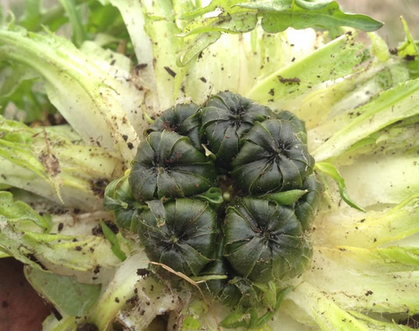Dandelions
- Shawn Dawson
- May 15
- 3 min read
If foraging wild plants for food is new to you, then harvesting dandelions may be the best way to start! Most of us are familiar with this so-called “weed”, so it is easy to identify, as an early spring plant that appears in May or June, but we may not be aware of the many uses of this wonderful wild plant from the root right up to the flower.
The scientific name of dandelion is Taraxacum officinale, which, roughly translated, means "the official remedy for disorders." As this shows, the benefits of ingesting this plant go far back in history. Here in Newfoundland, a spring harvest of dandelions was one of the real delights of spring, and a recognized way to rebuild health after a long winter.
Here are some of the ways to benefit from dandelions:
Greens: Dandelion greens are a delicious, nutrient-rich vegetable that makes a wonderful salad green as long as you catch them early, before they begin to show any signs of flowering. They can become quite bitter once they flower. After a long winter without eating much in the way of greens, I love to start making salads with these delicate leaves.
The greens I eat make me feel like Popeye after he has his spinach. They also go great on pizzas, in pesto, frittatas or other egg dishes. Dandelions were traditionally used in Newfoundland as cooked greens along with Jiggs Dinner.
Buds: Once the dandelions start to become bitter, they produce many little flower buds at the base of the plant. Before they open, these buds can be cooked like peas. They are excellent steamed with a little butter salt and pepper.
But my go-to is to make dandelion capers! This is done by making a lacto-fermented pickle which is actually a much easier thing to make than it sounds. It is simply a way of fermenting in a salt brine that creates a lactic acid to ferment the buds. Dissolve one tablespoon of salt in one cup of water and pour them over a mason jar filled with unopened dandelion buds. Put a stone or other weight on top of the buds to keep them submerged in the salt brine. Put on a loose lid and they will quickly start fermenting. They will need to be burped daily to release the gases inside the jar. This fermenting goes on for 4 or 5 days until the bubbling slows down and they will now be shelf-stable and can be stored in the fridge.
The Flowers: After the buds shoot up, on a long, hollow stem and the vibrant yellow flowers open, you can use the flowers to make teas, wine, beer or a lovely jelly that taste very similar to honey. You will need to remove all the flower petals from the stem when using the flowers.
For dandelion flower fritters, just dip the flower, stem and all in a thick flour batter and pan fry. They are so good with a wonderful sweetness.
Roots: Lastly, dandelion roots can be harvested at any time through the year. They make a great coffee substitute when roasted and can be used like chicory to give a rich flavour for baked goods. The roots can also be combined with the flowers to flavour beer, mead and wine. The roots can be hard to dig, so I like to harvest them from areas with rich soil, like gardens and compost piles to make it much easier to remove the roots from the ground.
The roots will be very dirty, covered with soil, so I like to soak them in a bucket of water for a day and then they scrub clean very easily. After cleaning the roots, line them upon a baking tray with space between them, and dry them in the oven on the lowest setting, with the door of the oven cracked so they dry instead of being cooked. When your house smells like a coffee roaster and the roots easily break in half, they are ready to be taken out of the oven. Let them cool and then grind them in a coffee grinder. You will have your very own, home grown coffee!
.png)



















Comments